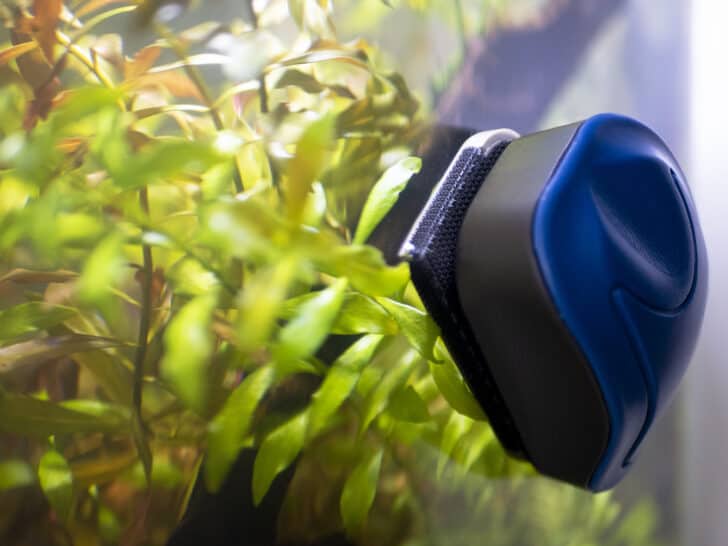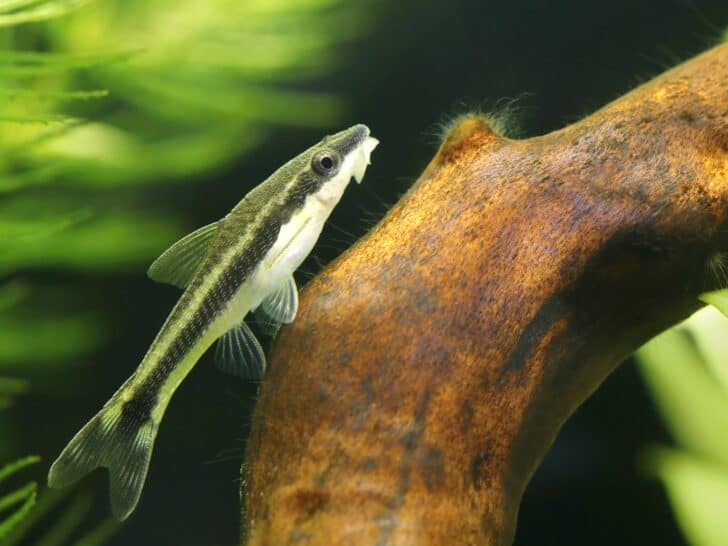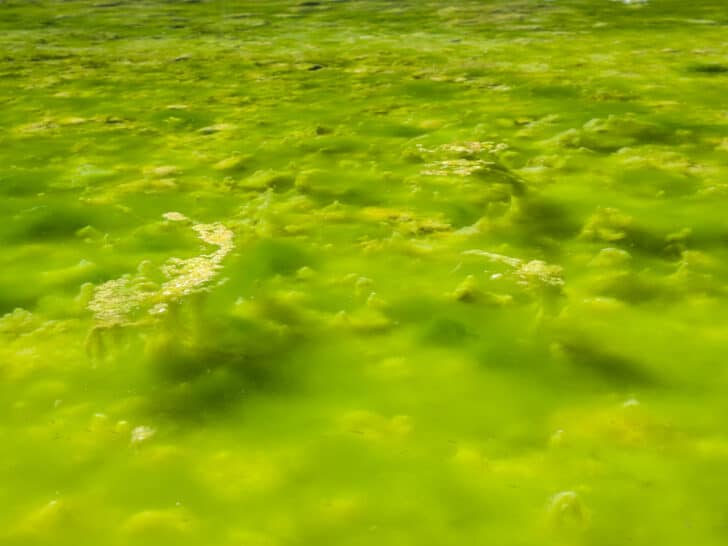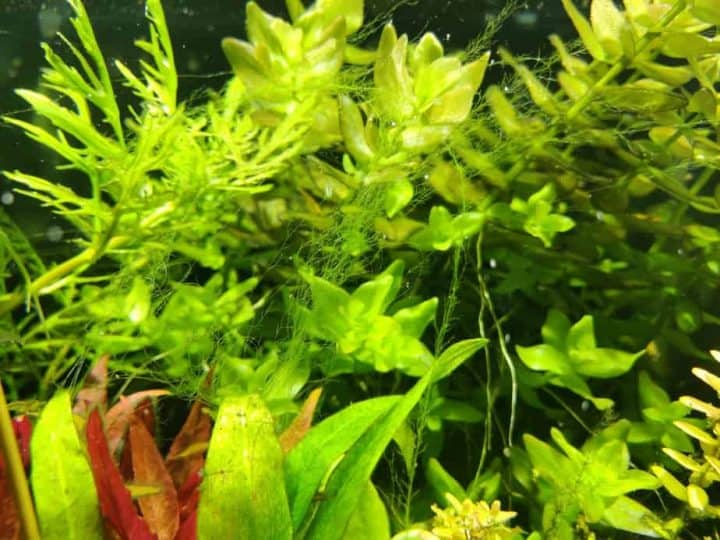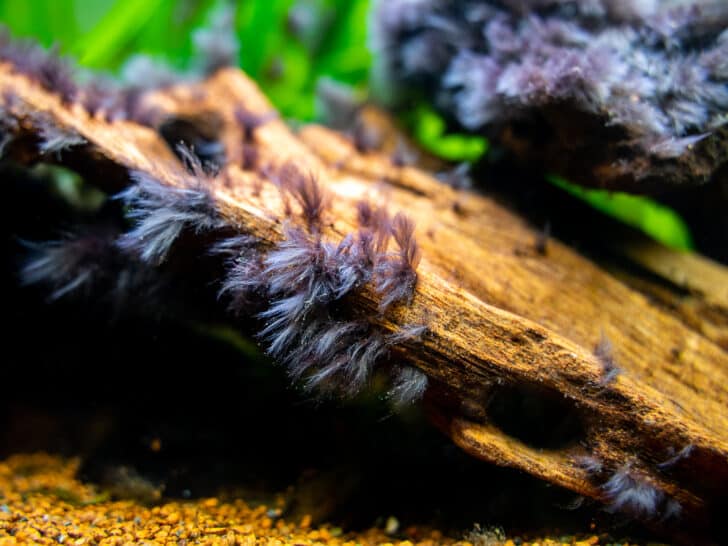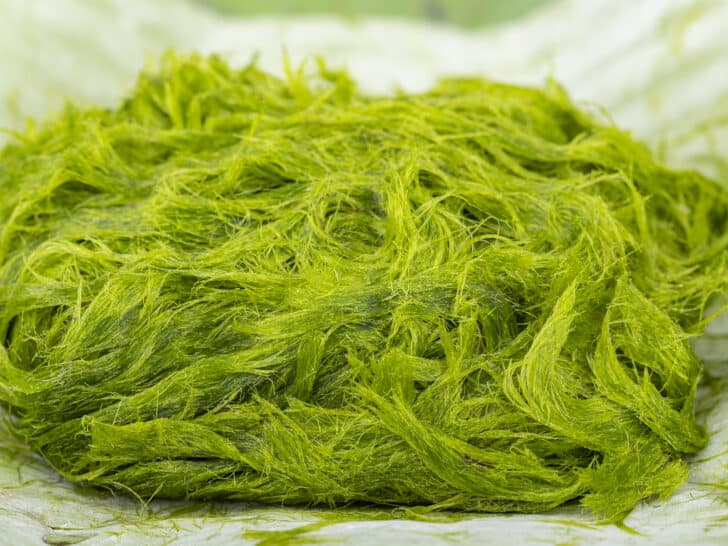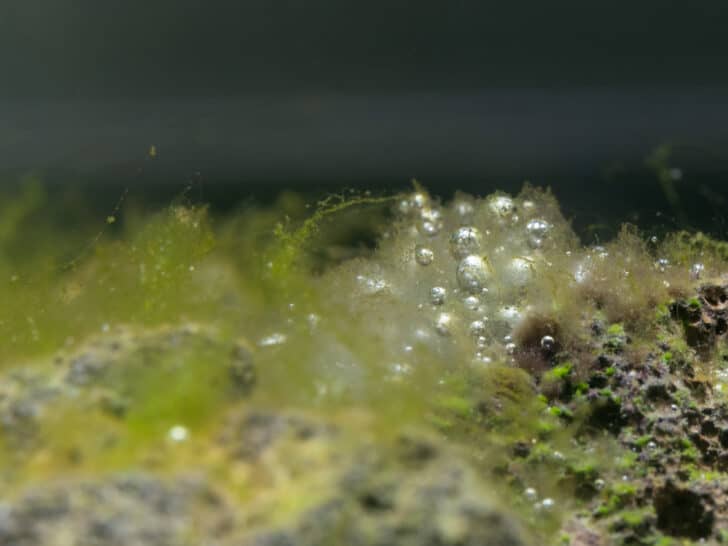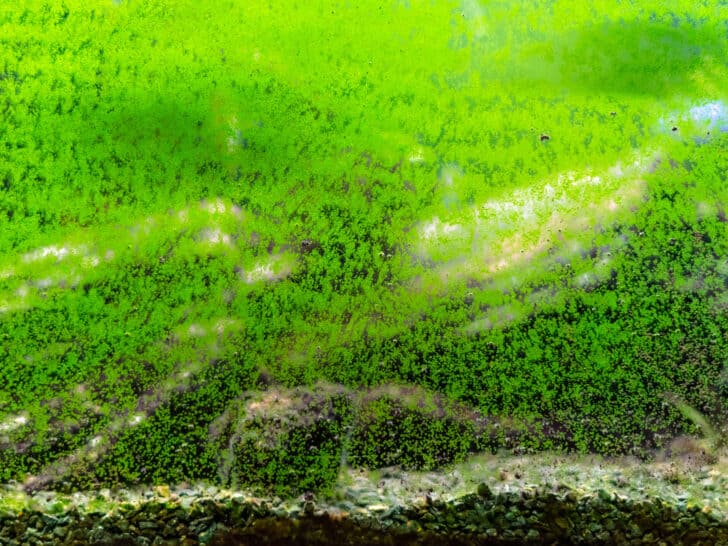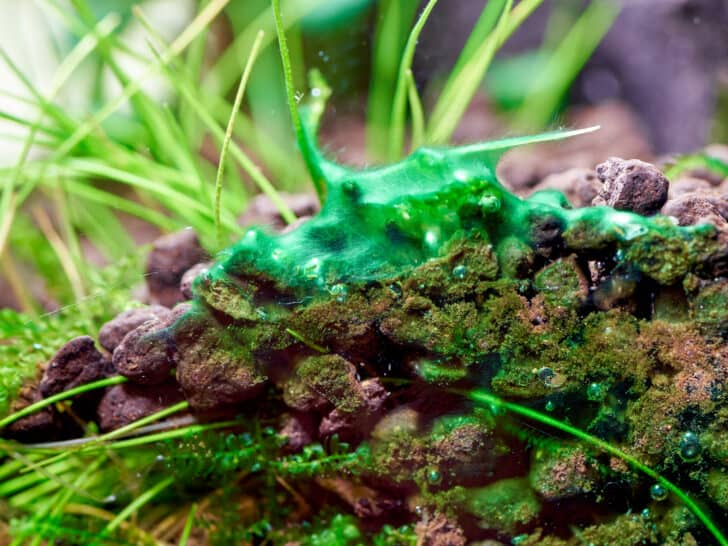From my experience, brown algae is some of the ugliest looking algae that I’ve ever had in a fish tank. Therefore, I want to teach you what to do about brown algae in your aquarium.
Quick Answer
To remove brown algae from your aquarium, physically scrape it off the tank glass and clean any decorations or plants that have algae on them. You should also ensure that your filter is working properly, remove excess nutrients from the water, add more plants, add algae-eating fish, and more.
Make sure to keep on reading, as I’ll cover what brown algae is, how to remove it and (most importantly) how to prevent it. Let’s dive straight in!
What Is Brown Algae?
One of the most confusing aspects of brown algae is that technically speaking, it is actually a very small animal. Brown algae is technically known as a diatom, which is an extremely small organism that can only be seen by a microscope.
These are known for being some of the most prolific and important microscopic sea organisms in the world. While this may be true out in the wild, they are not welcome in aquariums.
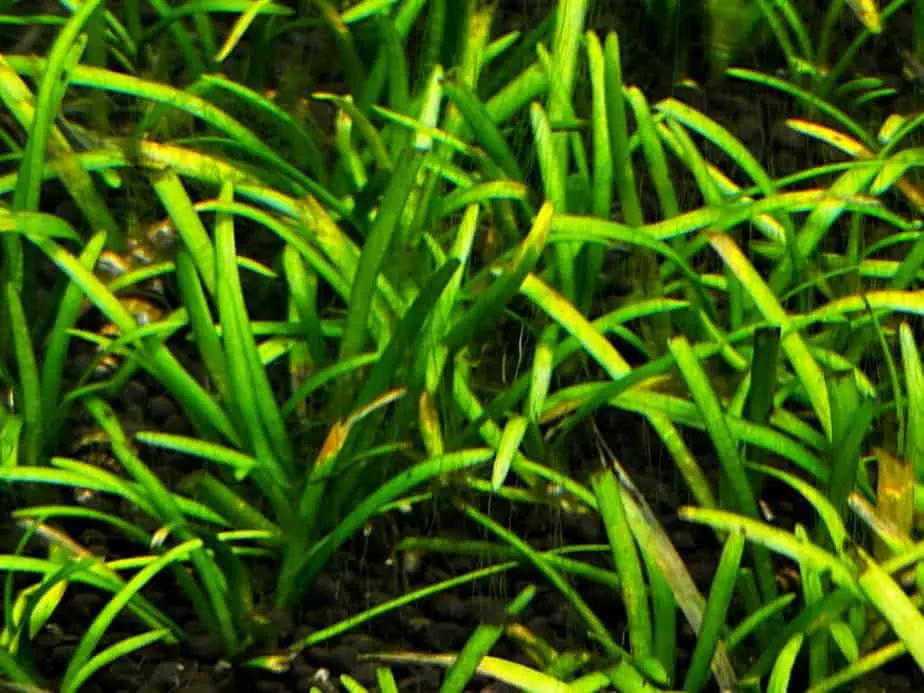
Some scientists may technically not consider diatom or brown algae as an actual species of algae, but diatoms do multiply just like regular algae, and they even perform photosynthesis when exposed to sunlight.
For all intents and purposes, when it comes to your aquarium, brown algae is really no different than any of the other types of algae that you may have encountered.
While brown algae is not considered harmful to fish, it can be harmful to your other aquarium plants. If too much of this brown algae builds up on your other plants, it can quite literally suffocate them. With brown algae, you’ll notice brown spots growing on the plants, glass, substrate, and decorations.
Causes of Brown Algae
In most cases, brown algae occurs in relatively new aquariums that are still cycling. This is because the water quality and water parameters may still be fluctuating, and the tank is not totally balanced yet. Remember, just like other types of algae and plants, diatoms feed on nitrates and phosphates.
Nitrates are especially important here. When plant matter, fish food, and fish waste decays, they release phosphates and ammonia into the water. Your water filtration unit should convert those substances into nitrites, and ultimately into nitrates.
The issue here is that if you don’t have enough plants in your aquarium, then a lot of those nitrates will be left in the water, and therefore available for the brown algae to feed on.
This type of algae also feeds on silicates, which are often present in the water. Silica is something that can often be found in well water and tap water, so you might want to avoid using these.
It has also been noted that brown algae tends to thrive in darker areas of the tank where there is a distinct lack of lighting. Now that you know what causes brown algae to appear in fish tanks, you probably already have a good idea of what the solutions will be.
Removing and Preventing Brown Algae in Aquariums
Let me quickly go over the eight best ways to remove algae from aquariums, and how to prevent it in the first place.
1. Physically Remove the Algae – Maintenance and Water Changes
Brown algae sticks to everything it touches, so one of the easiest ways to get rid of it is by physically removing it. You can use sponges, scrapers, or anything else you see fit. Clean any and all existing algae off of the aquarium glass, plants, decorations, and more.
You can always clean your plants and aquarium decorations in a diluted bleach solution, as this should kill any and all algae it comes into contact with.
Another easy method here is to perform regular water changes. Although performing a 30% or even a 50% water change won’t get rid of all of the brown algae, it should help put a bit of a dent into the population.
2. Check Your Filtration Unit
Seeing as excessive nutrients are a big issue here, you want to prevent the water from containing them. One of the best ways to do this is by ensuring that your filtration unit is working properly.
Seeing as decaying plant matter, fish waste, and uneaten food all release the nutrients that these organisms need to grow, ensuring that you have proper mechanical filtration is very important. Ensuring that your filtration unit also performs biological filtration adequately is crucial as well.
3. Add More Plants into the Tank
Seeing as brown algae likes to grow when there are excessive nutrients in the water, a good idea is to add more plants into your tank.
The more plants are in your tank, the more of those excessive nutrients will be eaten up before the brown algae gets a chance to feed on them.
In other words, if you can’t control how much nutrients are being put into the water, you can control how much of them are being taken out.
4. Add Algae-Eating Fish into the Aquarium
One of the simplest things you can do to take care of brown algae is to add a variety of algae-eating fish and other creatures into your tank.
These include, but are not limited to, otocinclus catfish, bristlenose plecos, nerite snails, amano shrimp, and hillstream loaches. They may not be able to eat all of the algae present in your fish tank, but they can certainly help you out.
5. Provide the Aquarium with More Light
Seeing as a distinct lack of light is noted as being one of the major causes of brown algae growth, the simple solution here is to provide your aquarium with more light.
Providing your aquarium with more natural sunlight should help prevent brown algae from occurring. However, beware that excessive sunlight can also cause other types of algae to bloom, so there is a fine balance to strike here.
6. Use the Right Kind of Water
You should always condition the water you use before putting it in your aquarium, specifically with an appropriate aquarium conditioner. It should help to remove any unwanted substances, such as additional silicates, from the water.
If you want to ensure that your water is as clean as possible, using reverse osmosis water is another option. Some people even choose to install reverse osmosis filters and their aquariums.
7. Avoid Putting Excess Nutrients in the Water
Another simple solution here is to avoid putting excess nutrients in the water, which means that you certainly shouldn’t add additional nutrients and fertilizers for your plants. If brown algae is growing, you already have more than enough nutrients in the water.
Furthermore, you should also stop overfeeding your fish. If you overfeed your fish, they create more waste, and they’ll likely leave uneaten food in the tank as well. Fish waste and uneaten food release ammonia, which eventually breaks down into nitrates, and therefore provides the algae with plenty of food.
8. Increase Water Flow
Brown algae likes to stick to surfaces, and once it does, it starts multiplying much easier. Therefore, increasing the water flow using something like this powerhead pump in your tank should help to prevent the algae from settling down.
Conclusion
There you have it folks, you should now know everything about brown algae you need to know in order to remove it from your aquarium and to prevent it from growing in the first place.

